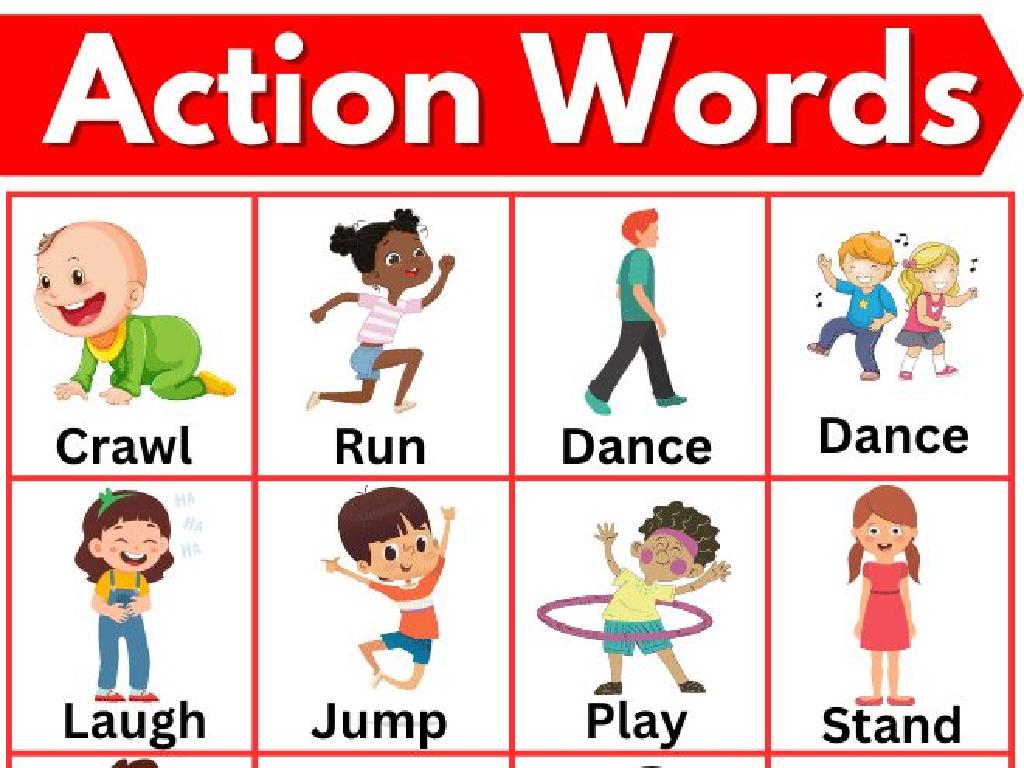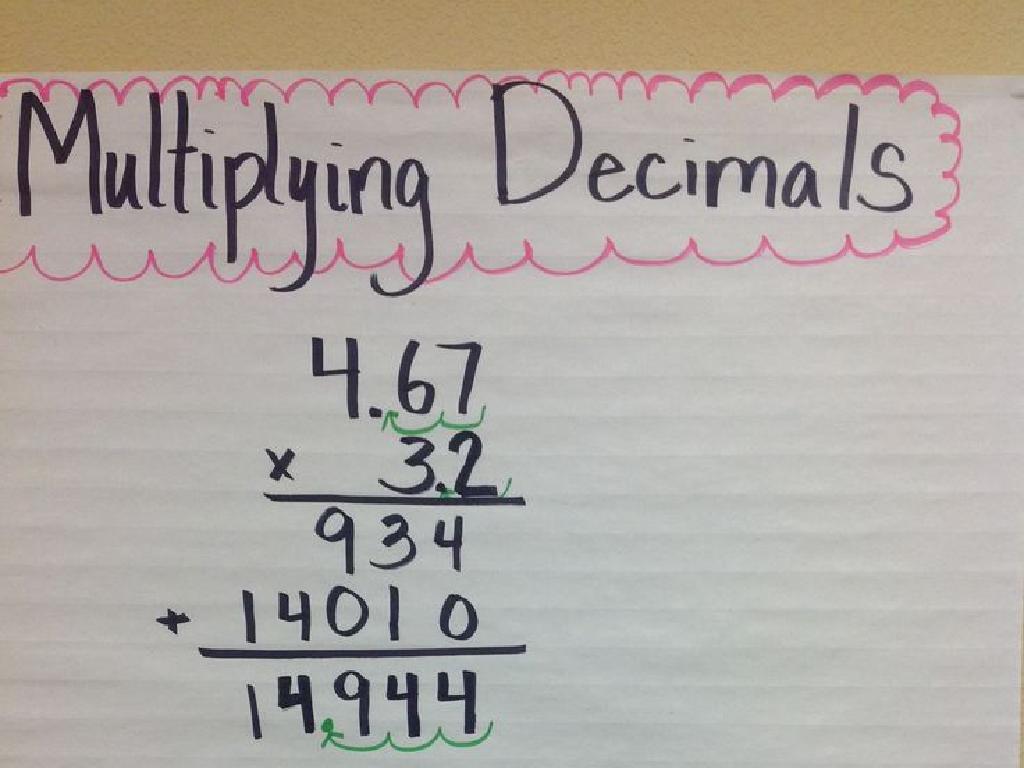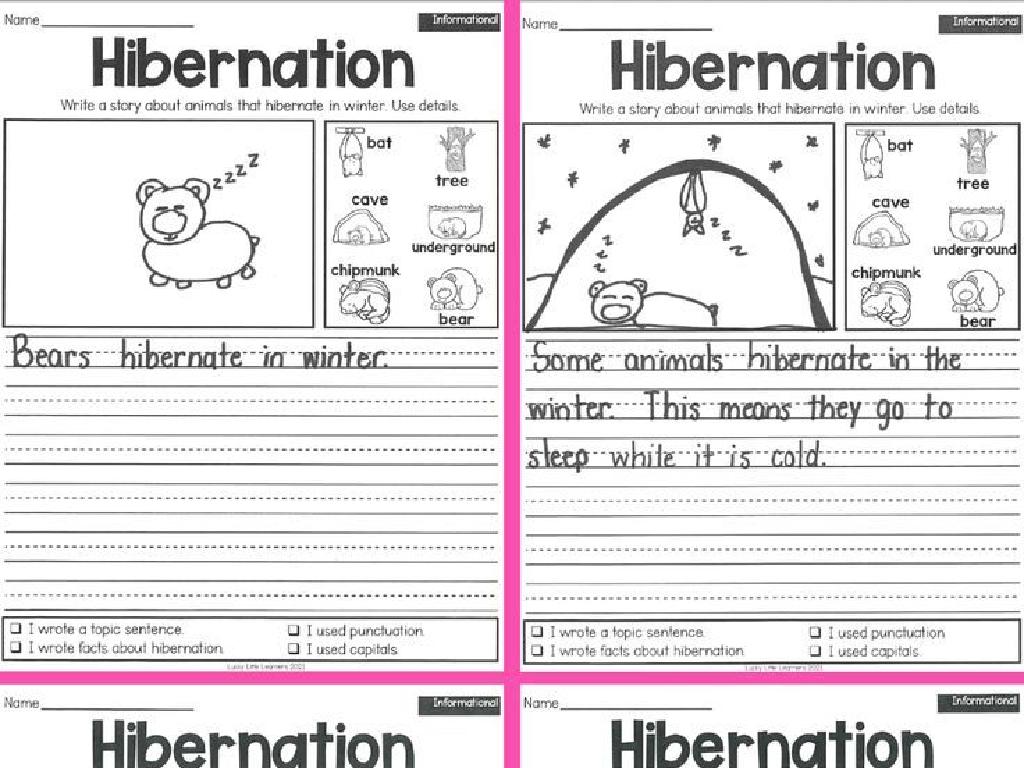Identify Rectangles
Subject: Math
Grade: Fifth grade
Topic: Quadrilaterals
Please LOG IN to download the presentation. Access is available to registered users only.
View More Content
Identifying Rectangles in Quadrilaterals
– What are quadrilaterals?
– A shape with four sides and angles
– Rectangles: A type of quadrilateral
– Rectangles have four sides and four angles
– Four right angles in rectangles
– Each angle in a rectangle is 90 degrees
– Opposite sides are equal and parallel
– Side AB is parallel to side CD, and AB = CD
|
This slide introduces the concept of quadrilaterals with a focus on identifying rectangles. Begin by explaining that quadrilaterals are four-sided shapes, which sets the stage for understanding more complex shapes like rectangles. Emphasize that rectangles are a special type of quadrilateral with unique properties, such as having four right angles and opposite sides that are equal in length and parallel to each other. Use visual aids to show these properties and provide examples of rectangles in both math and real-life contexts, such as books and doors. Encourage students to look for these characteristics when identifying rectangles. This foundational knowledge will be crucial as they progress in geometry.
Exploring Quadrilaterals: Rectangles
– Define a quadrilateral
– A shape with four straight sides and angles
– Quadrilaterals have four sides
– Count the sides to identify them
– Quadrilaterals have four angles
– Each corner has an angle
– Examples vs. non-examples
– Rectangles are quadrilaterals, circles are not
|
Begin the lesson by defining a quadrilateral as a polygon with four straight sides and four angles. Emphasize that counting sides and angles is crucial in identifying quadrilaterals. Provide clear examples of quadrilaterals, such as squares and rectangles, and contrast them with non-examples like circles and triangles. Use visuals to help students differentiate between examples and non-examples. Encourage students to draw their own quadrilaterals and to look for real-life objects that have quadrilateral shapes. This foundational understanding will be important as they learn to specifically identify rectangles within the category of quadrilaterals.
Characteristics of a Rectangle
– Opposite sides equal & parallel
– Opposite sides look the same and never meet
– Each angle is 90 degrees
– Corners of a rectangle are always square
– Identifying rectangles
– Look for these signs to spot rectangles among other shapes
|
This slide aims to help students recognize rectangles by understanding their key properties. Emphasize that rectangles are a type of quadrilateral with special characteristics. The opposite sides of a rectangle are not only equal in length but also parallel to each other, which means they run in the same direction without ever crossing. Each corner or angle in a rectangle is a right angle, which measures 90 degrees and looks like the corner of a square. To identify a rectangle among other quadrilaterals, students should look for these two signs. Use examples of rectangles in the classroom or from real life, such as books, doors, and screens, to illustrate these points. Encourage students to bring in pictures or objects that have a rectangular shape for the next class to reinforce the concept.
Rectangles Around Us
– Spot rectangles in the classroom
– Look around! Desks, windows, and books
– Rectangles in daily objects
– Think of your phone, TV, and door
– Rectangles in design and architecture
– Used for strength, space, and aesthetics
– Why rectangles are so common
|
This slide aims to help students recognize rectangles in their immediate environment and understand their significance in design and architecture. Encourage the students to observe their classroom and identify objects that have a rectangular shape, such as desks, windows, and books. Discuss how rectangles are present in many everyday objects like phones, TVs, and doors due to their practical and efficient shape. Highlight the importance of rectangles in design and architecture, emphasizing their role in providing strength, maximizing space, and contributing to the overall aesthetics of structures. The absence of a sub_content for the last point suggests that the concept of rectangles being common due to their properties is straightforward and may not require further elaboration for fifth graders.
Drawing Perfect Rectangles
– Use a ruler for straight sides
– Measure sides for equal length
– Opposite sides must be the same length
– Check angles with a protractor
– Each angle should measure 90 degrees
– Practice drawing rectangles
|
This slide is designed to teach students the step-by-step process of drawing accurate rectangles. Start by demonstrating the use of a ruler to draw straight lines. Emphasize the importance of measuring the lengths of opposite sides to ensure they are equal, as this is a key property of rectangles. Show how to use a protractor to measure each corner angle, verifying that they are all right angles (90 degrees). Encourage students to practice these steps by drawing their own rectangles. Provide them with rulers and protractors and let them experiment with different rectangle sizes. This hands-on activity will help solidify their understanding of rectangles as a type of quadrilateral.
Class Activity: Rectangle Scavenger Hunt
– Find classroom rectangle items
– Draw the rectangles you find
– Share your findings with the class
– Discuss rectangle properties
– Rectangles have 4 sides and 4 right angles
|
This interactive activity is designed to help students identify rectangles in their immediate environment. Encourage the students to look around the classroom and list items that have a rectangular shape. Once they have identified these items, ask them to draw these rectangles on a piece of paper, paying attention to the properties that make them rectangles, such as having four sides and four right angles. After the drawing activity, have the students share their findings with the class, which will help reinforce their understanding of rectangles and their properties. As a teacher, prepare to guide the discussion towards recognizing rectangles and differentiating them from other quadrilaterals. Possible items they might find include books, chalkboards, and desks. This activity will not only make the learning process fun but also enhance their observational skills.
Conclusion: Rectangles Around Us
– Recap rectangle properties
– Rectangles have 4 sides, opposite sides equal & parallel, 4 right angles.
– Why rectangles are everywhere
– Rectangles are stable and stackable, making them ideal for building and everyday objects.
– Engage in Q&A session
– Time to ask questions and clarify doubts about rectangles.
|
As we wrap up our lesson on rectangles, let’s revisit the key properties that define them: four sides with opposite sides being equal and parallel, and four right angles. Emphasize the practicality of rectangles in our daily lives, from books to smartphones, explaining their widespread use due to the stability and ease of stacking they provide. Encourage students to think of more examples where rectangles are used and why. Conclude with an interactive Q&A session, allowing students to ask questions and engage with the material, reinforcing their understanding of rectangles and their significance.




